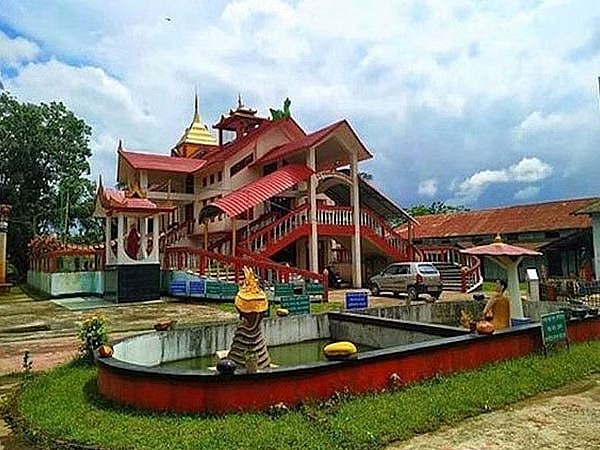Buddhism & Environmentalism: How North East India’s Monastic Communities are Championing Green Initiatives
 |
| A monastic community in North East India (Pic/ANI) |
A shining example is the Buddhist community of Chalapathar Shyamgaon, a village in eastern Assam. Prompted by the near extinction of the bhungloti creeper, a native plant traditionally used to give Buddhist monastic robes their iconic saffron hue, this community took the bold step of adopting the nearby forest as the Chala Village Sanctuary.
This was more than a symbolic gesture: it marked the beginning of a concerted effort to protect and rejuvenate the local ecosystem.
The monks of Chalapathar Shyamgaon have since worked tirelessly to guard the forest against illegal logging and poaching, even forming a forest protection group of 22 individuals to assist the understaffed Forest Department. But their efforts have gone beyond mere preservation.
The community has been re-greening parts of the land that had been denuded by illegal logging, planting more than 20,000 saplings gifted by the Forest Department. They have also established a biodiversity park, hosting an assortment of orchids and indigenous trees.
What motivates these communities? The answer lies in the Buddhist teachings. The Buddha emphasized living in harmony with nature and respecting all life forms.
Buddhism encourages mindfulness, a deep awareness of the effects of one’s actions on the world, as a way to avoid causing harm to nature and other living creatures. The teachings also stress the concept of “ahimsa”, or “do no harm”, which is often interpreted as a call to show compassion and avoid taking life, including that of non-human beings.
This mindful approach extends to the ecosystem. The Buddha taught that people should not disrupt the habitats of other creatures or kill other living beings. Destroying natural habitats, therefore, can be seen as a violation of the precepts of Buddhism, an act of thoughtlessness that harms not just the immediate environment but the interconnected web of life.
The Chalapathar Shyamgaon initiative and others like it highlight how Buddhist monastic communities in North East India are living these teachings, championing environmental stewardship as a spiritual duty. By integrating Buddhist principles with conservation efforts, they are preserving their local environments and setting a powerful example of ecological responsibility for the wider world. (ANI)
Recommended
 World
World
India strengthens defense and security ties with Central Asia
 World
World
India–Brazil–South Africa (IBSA) Dialogue Forum: An Assessment – Analysis
 World
World
India’s package for exporters signals confidence in Southeast Asia markets
 World
World
Japanese PM Sanae Takaichi and Indian PM Narendra Modi agree to deepen Japan-India cooperation
Popular article
 World
World
Australia, Canada, India Enhance Cooperation in Technology
 World
World
PM Modi underscores "shared commitment to global progress and prosperity" at G20 Leaders' Summit in Johannesburg
 World
World
Bridges beyond borders: India’s supports Nepal’s growth, tourism, and cricket dream
 World
World



